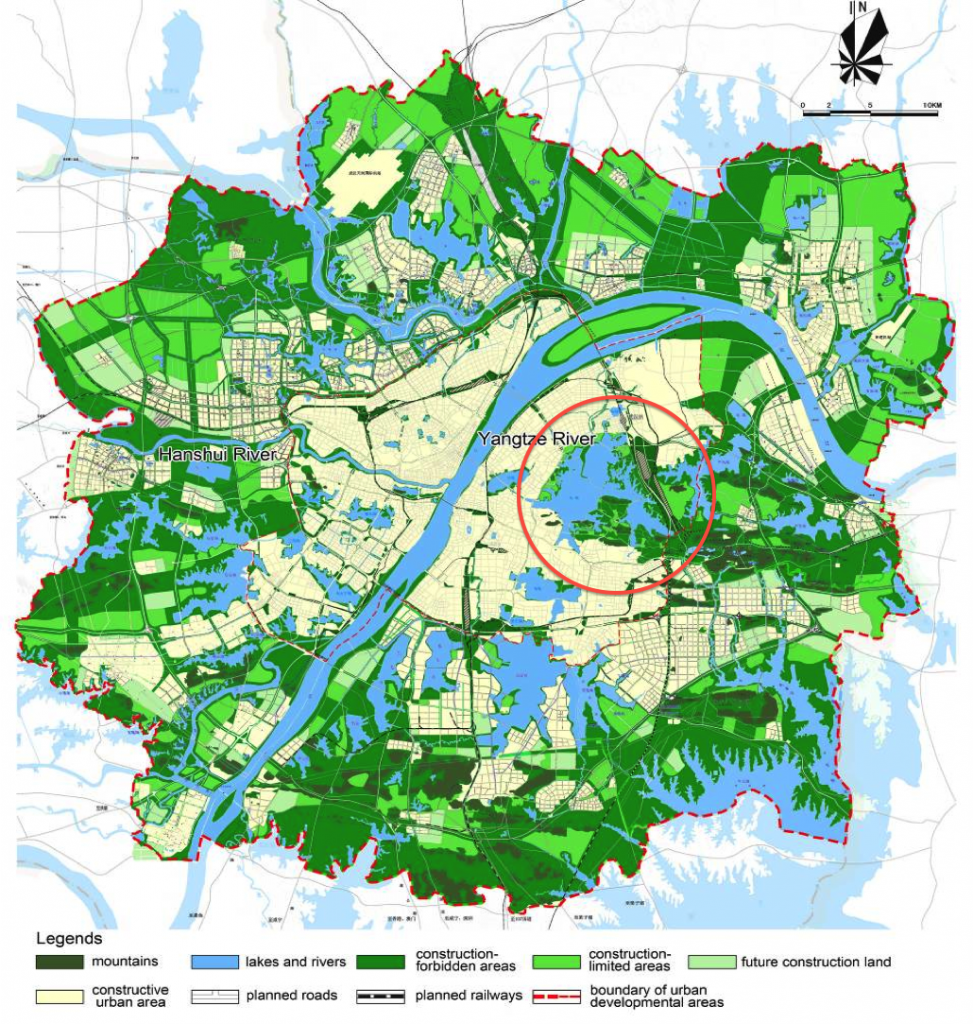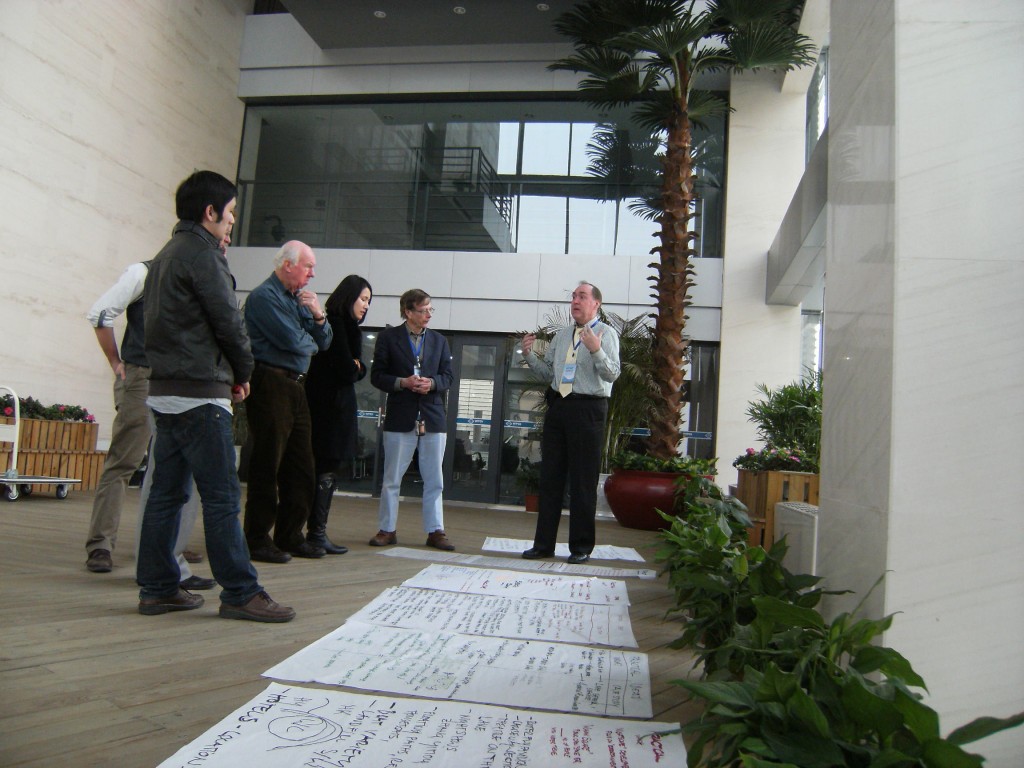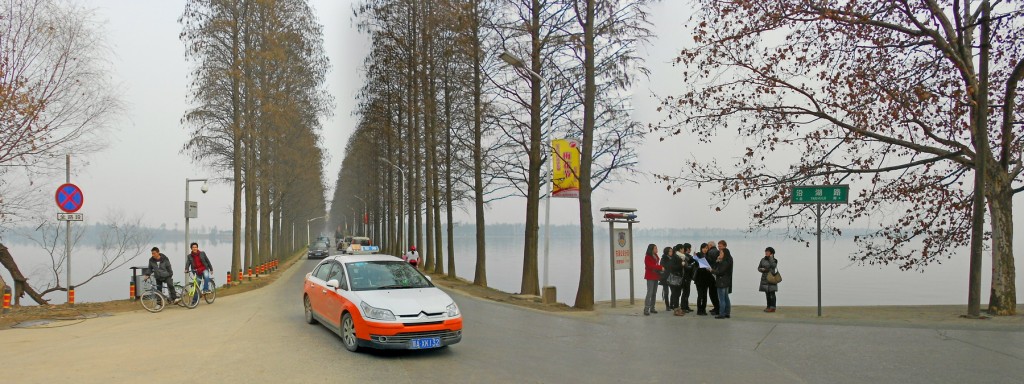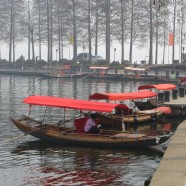Workshop Wuhan East Lake Scenic Area
A team of experts of the ISOCARP, the International Society of City and Regional Planners, participated in an International Advisory Workshop for the Wuhan East Lake Scenic Area on 11-16 March 2012. During that workshop the experts observed the field conditions in the vast planning area and were briefed about the objectives of the Wuhan East Lake Scenic Area. The ISOCARP experts carefully reviewed the plans, shared their experiences of related international practices, and initiated sketch sessions in which opportunities and threats of the planning area were discussed.
The Wuhan Planning and Design Institute (WPDI) is a public sector consultancy working in close collaboration with the Wuhan City Planning Bureau and East Lake Administration. The Institute has prepared a 2025 Master Plan for the Wuhan East Lake. The International Society of City and Regional Planners (ISOCARP) is a global association of experienced professional planners. The objective of an ISOCARP Urban Planning Advisory Team (UPAT) is to offer the extensive planning experience and expertise of ISOCARP members for international planning projects, programs and policies. The WPDI has entered into an agreement with ISOCARP to organize and conduct a UPAT to study and prepare a “Development Strategies and Sustainability Concepts Report” for the Wuhan East Lake Scenic Area. The report addresses ecological preservation, tourism, transportation, conceptual design in the study area and the explored area.
The East Lake lays within the built up area of Wuchang that is one of the three component parts of the City of Wuhan. It has the distinction of being the largest inner city lake in China [33 sq km]. The project that we were presented with involves transforming the lake and its immediate hinterland into an attractive lake resort representative of the urban living style of Wuhan. Moreover, landscape and ecological considerations are to feature prominently in the UPAT’s proposals—lake and city, man and nature are to co-exist harmoniously.
In seeking to elaborate the development objective, we formulated an ambitious vision for 2025 of a high quality tourist resort that would co-exist harmoniously with an enhanced natural environment, existing communities and the cultural heritage. Thus the vision of the UPAT for the East Lake Scenic Area is that by 2025 it will be an inspirational example of sustainable development in China’s paramount “Lake City” which provides:
- an enhanced visitor experience, based on ecotourism principles, that benefits both the people of the Wuhan area and those from wider afield, showcases the achievements of Wuhan, and matches the best available in other Chinese cities;
- a cleaner and healthier lake environment, together with an enhanced landscape, wildlife and cultural heritage for the benefit of this and future generations;
- improved accessibility to the Scenic Area coupled with better connectivity within its perimeter, especially by boat, bus and other low carbon means;
- enhanced economic and employment opportunities, including tourism & travel, research & development, arts & crafts and other sectors of the local economy.
 The UPAT comprised the following members: Martin Dubbeling, the Netherlands (ISOCARP Vice President UPATS), Ric Stephens, USA (Team Leader), Chris Gossop, UK (UPAT Rapporteur), James Colman, Australia, Stefan Rau, Germany, Sébastien Goethals, Belgium, Mei Yun, China, Yu Yang, China. The UPAT Team members were requested to share their knowledge and experiences.
The UPAT comprised the following members: Martin Dubbeling, the Netherlands (ISOCARP Vice President UPATS), Ric Stephens, USA (Team Leader), Chris Gossop, UK (UPAT Rapporteur), James Colman, Australia, Stefan Rau, Germany, Sébastien Goethals, Belgium, Mei Yun, China, Yu Yang, China. The UPAT Team members were requested to share their knowledge and experiences.
Download the bilingual (English-Chinese) ISOCARP Wuhan Report: DOWNLOAD #219_Wuhan UPAT Report










